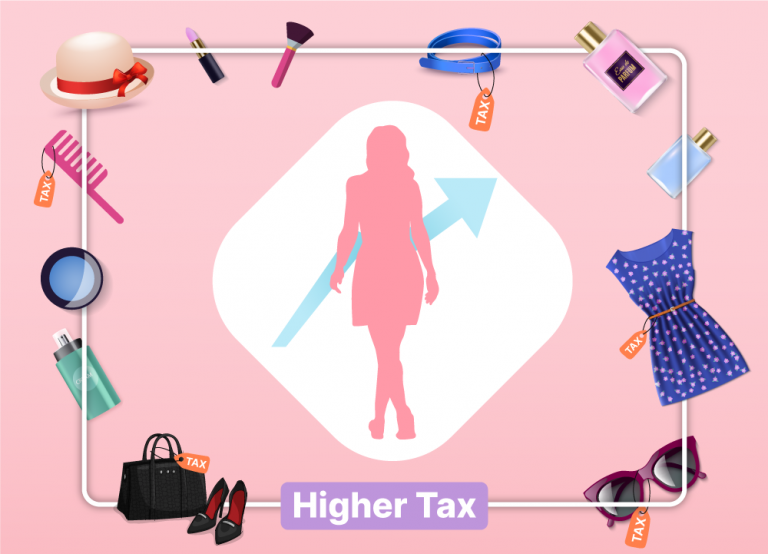“Girls love shopping” is a statement you hear thrown around a lot. While the comment undermines a whole gender and pigeonholes them as shopaholics throwing money at everything and nothing, businesses have been cashing in on this phenomenon for many decades.
Imagine reaching for an everyday product and discovering that the same product in a different colour costs less because it is advertised for men. This is the reality faced by women worldwide, and Indian women are no exception. This biased tax is named the PINK Tax, signifying the unfair taxation levied on women.
So what is this phenomenon and how does it affect your daily life? Let's find out!
The PINK Tax is an informal term used to describe the price disparity between products aimed at different genders.
When a company sells a pink product (female version), it is priced slightly higher than a blue product (male version) even though they are made of the same components and function very similarly.
This additional price is termed the PINK Tax. The business pockets this additional revenue from selling the female version of the product. The government does not benefit from the PINK tax.
This phenomenon has been around for decades, widespread across the world, with analysts noticing it only in the 1990s.
**The PINK tax is different from the tampon tax, which refers to the additional tax levied on feminine hygiene products**

We have all felt the frustration of buying overpriced pink versions, cursing the gods, existent and non-existent for burdening us with that extra few rupees. While it may seem nothing at the moment, the culmination of those few rupees adds to hundreds and over time thousands of rupees we could have saved had we been born as a man.
The cherry on top, however, is that the Pink Tax isn't an official tax levied by the government. It’s just good old corporate greed.
The difference in prices starts at the basics and often manifests in various sectors, including:
Several factors contribute to the existence of the PINK Tax in India and everywhere. Here are a few.
The Indian government viewed feminine hygiene products as luxury items and subjected them to 12% GST while male contraceptives were termed necessary and exempted from tax. This injustice created an uproar and highlighted the existent price disparity.
While the GST was waived off after persistent efforts from the activists, the PINK Tax remained untouched. Companies continue to exploit this lack of awareness for their own profits.
As mentioned above, the PINK Tax isn’t just a matter of a few rupees. It is individual price differences accumulated over time that create a significant financial burden, contributing to the already existing gender pay gap. This in turn further hinders our progress, and financial independence and puts a pretty pink dent in our fight for basic equality.
While efforts have begun and few countries have actively banned the PINK Tax, it may be a while before the whole world catches up. That doesn’t mean you can’t play an active role in undermining these biased corporate practices.
So pick up your pink clutch, hold on to your debit cards & credit cards, and save more by paying the right price following these techniques!
All we desire this women’s day is a fairer marketplace (and world) where we are not charged extra for being born a woman. The Pink Tax is discriminatory, and disrespectful and portrays a harmful narrative. Becoming informed consumers, supporting ethical businesses, and fighting gender-based discrimination in our own way is how we can make PINK Tax a thing of the past. When all is said and done, opposing the PINK Tax isn’t just about saving a few thousand rupees, it’s about taking a stand against unfair practices and unjust treatment.
Was this information useful?